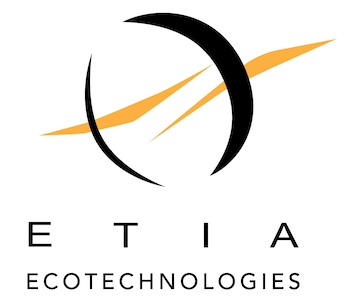Today all the waste treatment processes are based on the commonly agreed hierarchy, which indicates that after waste prevention and minimization, waste recycling and energy recovery should take place. To comply with it, waste treatment facilities use complex processing lines to divide the mixed stream of waste into different usable and recyclable materials. While mineral fractions, metals and plastics are sorted out and recycled, there is still a remaining residue, which represents both: opportunity and a challenge to be managed efficiently.
A new approach towards refuse derived fuel densification
What is refuse derived fuel?
RDF – refuse-derived fuel definition was created to describe all the non-recyclable, but still calorific fractions of waste, which thanks to their energy content, can be seen as an attractive alternative fuel. Refuse-derived fuel, also called SRF (solid recovered fuel), remains a blend of non-recyclable plastics, papers, wood, and textiles. To standardize its properties as a fuel and create a most heterogenous mixture, RDF is often shredded and dried. It often comes through the supplementary processes of refining, metal separations and screening to obtain best quality results as a solid fuel.
Density of refuse derived fuel
As every waste-derived product, typical RDF and SRF vary from one waste treatment center to another, featuring different particle size, calorific values and moisture. However, because of its ways of preparation, refuse-derived fuels are usually composed of very lightweight materials (100 – 150 kg/m3), which limits the potential usages due to the low density and significant volume of the product.
Towards RDF densification
Challenges of RDF densification has been explored in multiple ways, including compacting, pelletizing and briquette production. However, traditional methods of compacting which are efficient for biomass, often encounter many exploitation difficulties when applied for waste-derived material. Experiencing high operating costs of classic densification processes has driven us to entirely new approach towards compacting the refuse-derived fuels and RDF cubing.
Waste cubing: Our answer to waste fuel densification
ETIA distributes patented solution can be used variety of waste and biomass fractions, from RDF, SRF, waste plastics, through dry sewage sludge up to biomass. By minimizing the operating costs, we can process low-density materials (100 – 150 kg/m3) into a 30 – 32 mm uniform cubes that represent the density of more than 650 kg/m3. Biomass and RDF cubing allows the obtained product to be easy to transport, store and manage further.

Features of our densification system
- Compact dimensions of equipment (3400 x 1800 x 2100 mm)
- Operating with RDF flake up to 50 mm
- 1500 – 3000 kg/hr capacity per unit
- Repeatability of process and high-quality output
- Low electricity consumption
- No specific pretreatment (shredding, drying) required
- CE marked, industrially proven technology with references in Europe
- No odor emission and very low noise levels
RDF cubes
- Particle size 30 x 30 x L mm
- Calorific value (LHV) 18 – 25 MJ/kg
- Moisture max. 10%
- Density > 650 kg/m3
Note: Length can be regulated to your needs. LHV will depend on your RDF / SRF calorific value.


Find about waste cubing
If your business is looking for waste and biomass cubing and densification that would facilitate the storage and management of material – just contact us and discover our offer in details.
